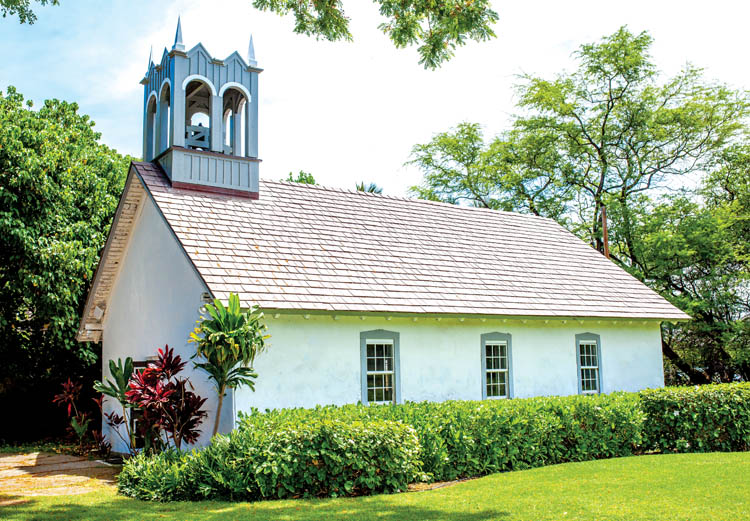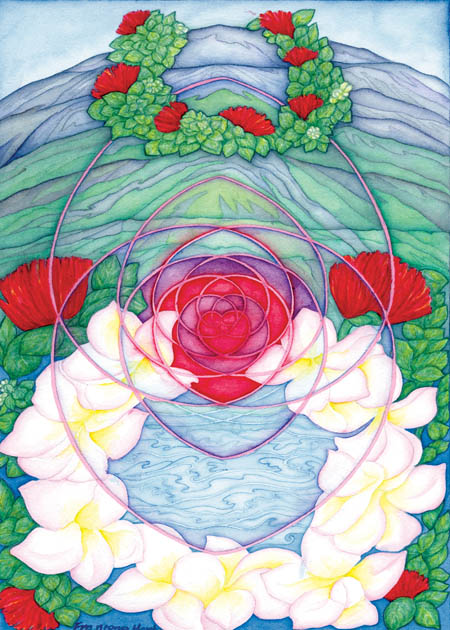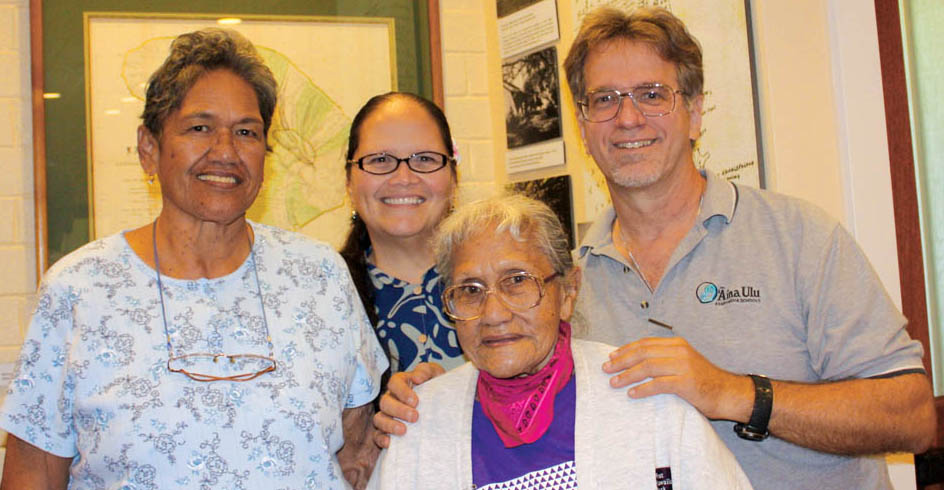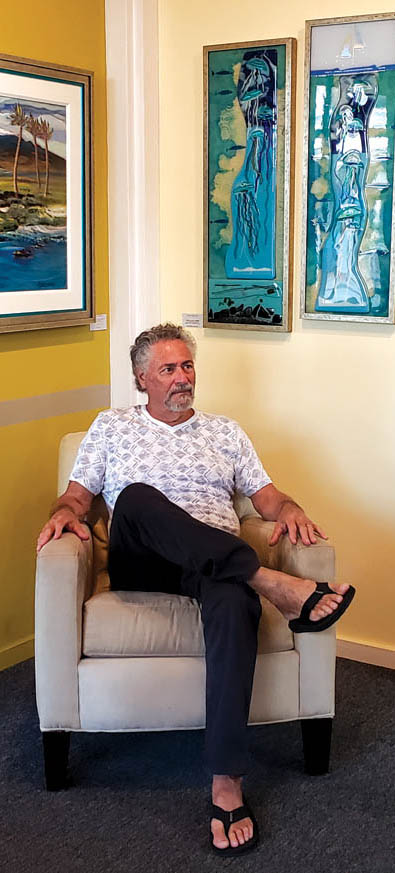
The Art of Stopping the World: Gary Ackerman
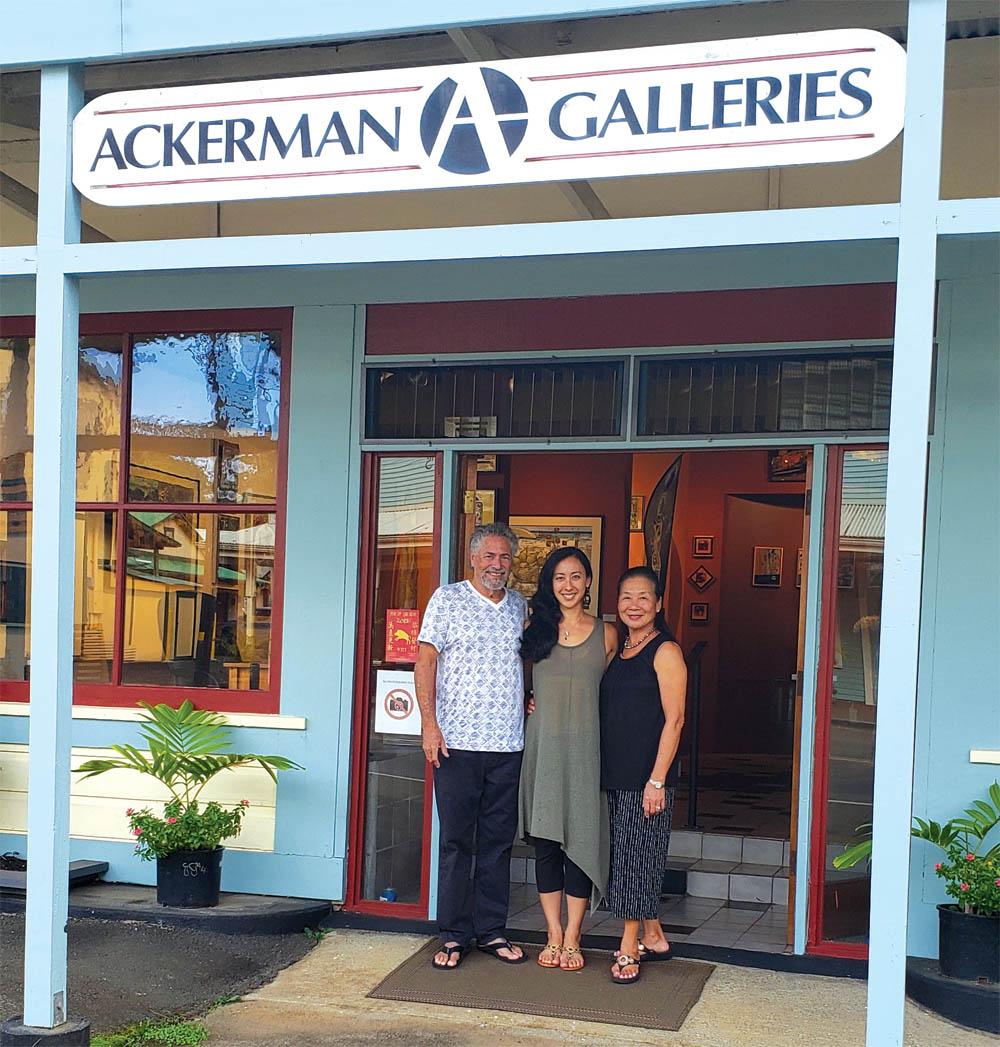
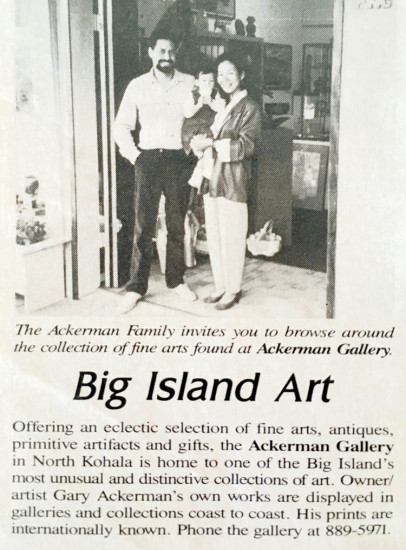
By Sara Stover
Most people would label their day as a bad one after being stung by a jellyfish. Gary Ackerman classified it as inspiration. Stung during one of his routine morning swims, the Hawai‘i resident and artist behind a gallery brimming with color-saturated pieces transformed the experience into an oceanic scene. With glass jellyfish that appear to float before your eyes, Gary calls the sculpture the Jelly Ballet.
Gary is inspired by the colors and rhythms of Hawai‘i—even those aspects of island life that others find unpleasant—even jellyfish. The Hawai‘i artist transforms his life experiences into art. Observing his world, Gary allows the designs to come to him and remains open to the sources and directions of his work.
Gary is originally an oil painter and has spent the past 50 years mastering this medium. Moved by his creative spirit, Gary started pushing the boundaries of the art world and integrating other materials into his work as well.
“I knew I wanted to integrate glass with metal for an element of rawness, so I chose copper. Working with copper presents a challenge that I enjoy,” says Gary, of another underwater sculpture called Island Aquarium.
“These fish bubbles though? They were a surprise to me!” he divulges.
“I take risks! And that’s the fun part—the unknown element,” the master of color, form, and texture says passionately.
“Passion is an important quality in art,” Gary exclaims, acknowledging his characteristic passion before detailing a childhood memory that sparked this fire in him. By his own account, Gary was five or six years old. He was sitting in class, gazing out the window at the trees, watching how the wind blew the leaves off and how they looked as they were falling. In that instant, he truly understood the experience of movement, light, and sight.
At 79 years young, Gary Ackerman is still finding new ways to capture the beauty of what he sees in brilliant colors and contrasting textures.
Deep Impressions
Gary set off for Paris at 16 years old. It was to be the beginning of a lifetime love affair with travel. From taking classes at the Sorbonne to visiting the Louvre, Paris has been his destination for inspiration over the years. It was there that Gary studied the masters of impressionist and conceptual art.

“I emulated the 14th-century artists, like Modigliani and Michelangelo. They made the deepest impression on me,” Gary affirms. He’s since traversed the globe studying other celebrated artists.
Born in Los Angeles, California in 1941, Gary returned to that city to study at the Art Center in Los Angeles before heading north. For a time, he lived in an art community in Oregon, where he was founder and president of the Grants Pass Art Museum.
Eventually, Gary left the West Coast in search of a dramatic life change. Seeking healing on Kaua‘i, he found himself living in the Kalalau Valley on Kaua‘i for more than a year. It was there that Hawai‘i’s beauty inspired him to create art infused with the vibrant colors and designs of the islands.
In 1976, Gary followed that inspiration all the way to Hilo, and then to the west side of Hawai‘i Island, where a few local residents spoke of North Kohala. They suggested to him that the best way to see the northwest portion of the island was to paint it. So, Gary continued on to Kapa‘au, arriving as the era of the sugar industry was fading.
“There wasn’t a road to Hāpuna [Beach] in those days,” recalls Gary, mentioning that he didn’t see the first rental car come through until the 1980s, a day he remembers vividly, as he was playing chess with a friend when that first tourist rolled by.
“There was no art scene back then either,” he states.
As such, Gary was a pioneer of historic North Kohala’s art movement. During that time, he assisted other business leaders in establishing themselves and focused on plein air painting. This French style of painting still enables him to highlight the brevity and essence of the world around him by painting on location. “It’s about painting outdoors where the light is good!” he is quick to add.
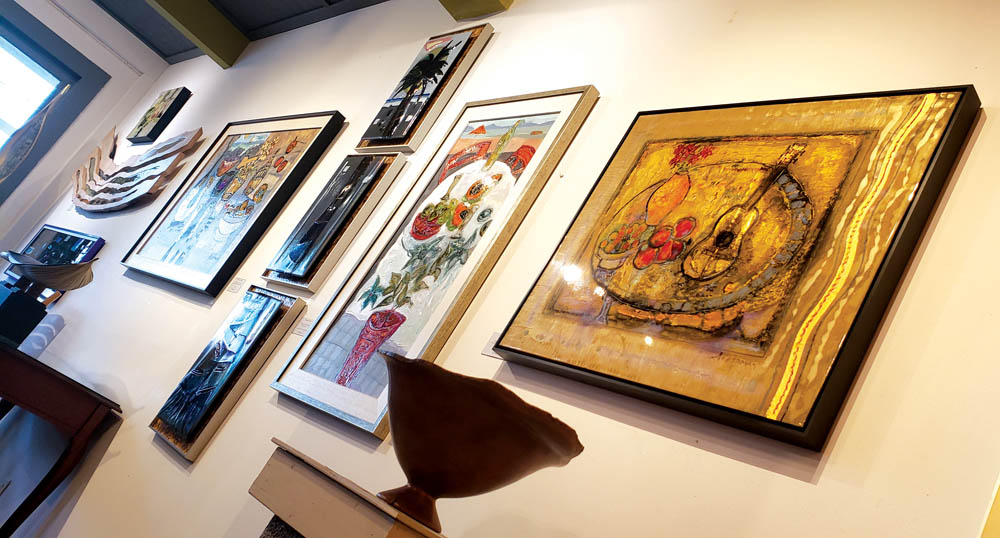
A Powerful Expression
While painting plein air in Pololū Valley one afternoon, Gary found a ray of light shining from an unlikely source. “At the time, I was in need of some encouragement, but I kept doing my own thing,” Gary says. “That day, a visitor drove up, marveling at my painting. He offered to buy it and I had to explain that it was half-finished, but this didn’t deter him.” When the stranger bought Gary’s painting, it was a powerful expression of someone else’s belief in his art. “This strengthened my own belief in my art,” he insists, “and in the path I have been on.”
After experiencing the breathtaking beauty at the end of the northern road, Gary settled down in Kapa‘au, which at the time was a one-tractor town. Here in the birthplace of Kamehameha I, Gary met his wife Yesan, and established his gallery and studio just steps from the original King Kamehameha statue.
The building bears little resemblance to the hub it was in North Kohala’s sugar plantation days, or the gas station it had become when Gary bought it. Today it is alive with bright oil paintings on canvas, blue-swirled paper embellishing raw wood, and abstract shapes that resemble windows.
“I saw a dolphin or whale in that kiawe wood, then moved within what I saw,” says Gary, pointing to a piece crafted of kiawe, gold leaf, ‘opihi shells, and scraps of palette paper.
Every piece has its origins in what Gary sees: the allure of Makaīwa Bay, glimpses of snow-topped Mauna Kea on a winter’s day, and the majesty of Kīlauea’s flowing lava.
A Moment’s Reflection
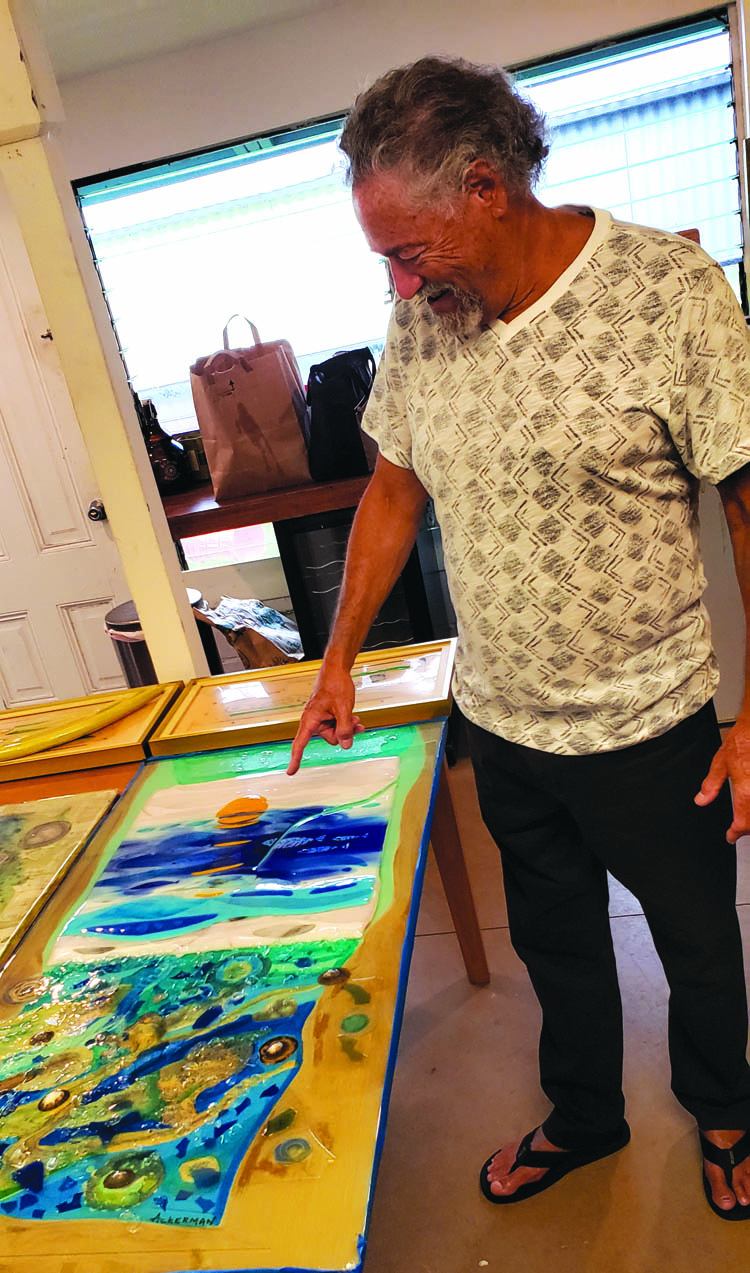
Art collectors seek out Gary’s creations and he is delighted to know that his work is highly esteemed and valued, even landing him in the international “Who’s Who of Artists.”
“There’s a duality though,” Gary explains. “My art is an extension of me, so it isn’t always easy to part with my work.” There is some artwork that will never be for sale or even displayed in the gallery—paintings like the one Gary co-painted with his grandson or pieces that Gary paints for the purpose of his own self-expression.
In the gallery, however, sculptures comprised of sleek metal and translucent glass, united and separated by epoxy, hang on the walls and catch the light that floods each airy room.
“Light is the most important element in life!” he asserts. It is also the reason you will rarely find Gary at the Ackerman Fine Art Gallery, although his wife Yesan and daughter Maylan will offer you a warm greeting when you visit.
With an endless amount of energy and persistence, the artist himself may very well be outside, painting plein air.
“My paintings take me outdoors for spontaneous impressions of the landscape,” says Gary, who reserves studio work for refinement. In the studio, he refines the art of stopping the world and reflecting moments in time onto canvas. And mixed mediums allow Gary’s true expression of wonder to be seen. This refinement is a process that requires an undetermined amount of time.
Even if a piece appears to be finished, Gary will intentionally turn it around for a while if he senses that its story has not completely unfolded. Whether the finished piece takes weeks or months, the result is original and internationally acclaimed artwork that illuminates the most dramatic and intimate moods of an island that he has called home for more than 40 years.
“The light is better here than anywhere in the world!” Gary says of what moved him to put down roots on Hawai‘i Island.
Gary describes his palette as a consistently changing one, combining traditional and modern techniques to attain a free liquid style that is simultaneously local and international. From underwater scenes and tropical still life to elemental forces and unique abstracts that echo nature’s elements, what remains constant is the warmth and aloha that Gary’s work radiates.
Existential Creations
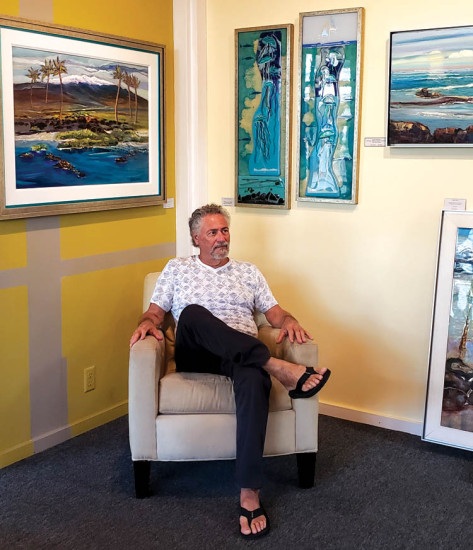
Fragile glass has cracked, creating an unexpected and intriguing ripple in a sculpture of the sun setting into the Pacific. Some artists would label their work a failure after examining the broken piece. Most people would also consider their day a bad one after being stung by a jellyfish.
Gary Ackerman is not most people.
“There’s no such thing as failure!” he declares. Perhaps this perspective is what makes Gary one of the few artists today that can fill an entire gallery with his own creative and authentic work, including the fractured glass sculpture, which will soon be on display.
Gary paints what he sees, and sees potential in what others would reject as a mistake. When metallic paint accidentally drips and runs across a shimmering amber plain, Gary lets it dry and shapes it into a stunning visual experience, hanging it on the wall in his gallery.
Gary’s artwork is a testament to the fact that everything we see is important. “Why? Simply because it IS. It exists,” is his thought-provoking answer. “And through my art, I express that!” ❖
For more information: ackermangalleries.com
